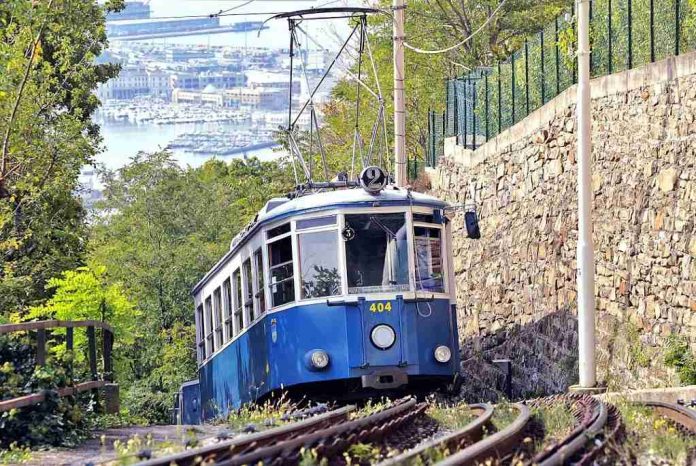by InTrieste
The Opicina tram, a historic fixture of Trieste’s transit system, is set to return to service on February 1, nearly nine years after an accident forced its suspension. Initially operating on a limited schedule, the line will gradually ramp up as additional cars are reintroduced.
The tram, which first began operation in 1902, has long been both a public transport mainstay and a beloved symbol of Trieste’s heritage. But since a derailment in 2016 led to its prolonged halt, its fate has remained uncertain, sparking debates among residents and city officials. Now, with new safety upgrades in place, the distinctive blue-and-white carriages will once again climb the steep hills connecting Piazza Dalmazia and Opicina.
For the first two weeks, service will operate with a single tramcar running 19 daily trips. The schedule will expand in phases, with two trams offering 39 trips daily starting February 17, and a full complement of three trams restoring 58 trips per day beginning March 3. The newly resumed route will not extend to Piazza Oberdan as it did before the suspension; instead, all departures and arrivals will take place at Piazza Dalmazia.
For many Triestini, the tram’s return is more than just a transportation convenience. “It’s a part of the city’s soul,” said Matteo Rossi, a local historian who has long advocated for its revival. “Generations have taken this tram up the hill to Opicina. To see it running again is to restore a piece of our past.”
The first departure of the day is scheduled for 6:53 a.m. from Piazza Dalmazia, with the last tram reaching Opicina at 8:18 p.m. The city plans to complete the installation of enhanced braking systems before expanding service.
Despite excitement surrounding the relaunch, some concerns remain. Commuters and preservationists alike worry about the long-term sustainability of the tram’s operation, particularly given the high costs of maintenance and modernization. Local officials, however, have reassured the public that continued investment in the line is a priority.
As Trieste readies itself for the return of a cherished piece of its urban landscape, residents are preparing to once again hear the familiar rumble of the tram climbing the Karst plateau—a sound absent for far too long.





























